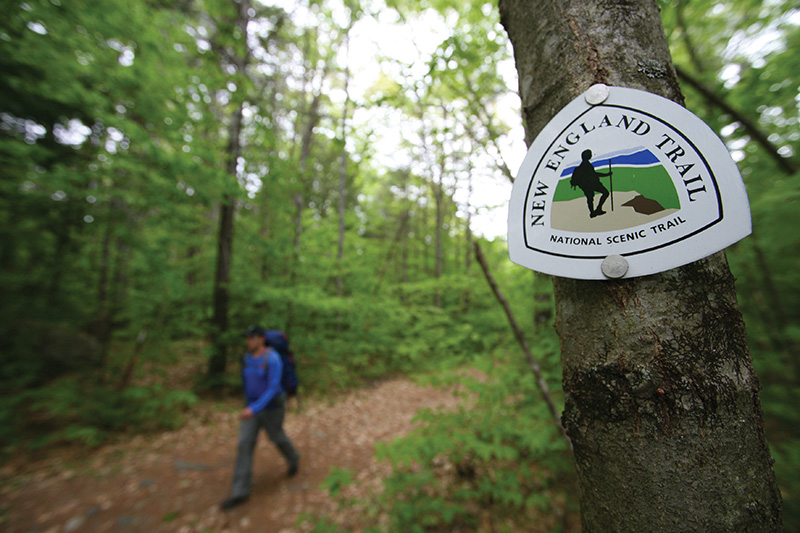
The New England National Scenic Trail
By Miriam Maistelman
The New England National Scenic Trail (NET), a 235-mile-long hiking trail stretching from Long Island Sound in Connecticut to the New Hampshire-Massachusetts border, is a close-to-home trail for millions of New Englanders. Designated by Congress as a National Scenic Trail in 2009, the NET guides hikers through state forests, wetlands, wildlife refuges, and up and down the formidable and humbling Holyoke and Mount Tom mountain ranges in Massachusetts. The Appalachian Mountain Club (AMC), the nation’s oldest conservation and outdoor recreation organization, maintains primary responsibility for managing the trail in Massachusetts in direct partnership with the National Park Service (NPS). The Connecticut Forest and Parks Association (CFPA) manages the Connecticut portion of the trail.

Image credit: Appalachian Mountain Club.
In December 2023, the New England Trail was officially designated a “unit” of the National Park System. This hard-won designation came in response to a decades-long legislative push led by AMC, CFPA, North Country Trail Association, and Ice Age Trail Alliance. This legislative feat, however, has been widely misinterpreted, resulting in many having the incorrect impression that the NET is a new national park. Unit status does not change public access to the trail or how it is managed on the ground but is effectively an internal administrative change. Nevertheless, this designation will open new opportunities for land managers to expand our capacity to protect the NET and serve the communities through which it travels.
Long before the New England Trail was even an idea, these lands were sustained, protected, and lived on by vast populations of indigenous tribes and communities: the Woronoco, Agawam, Nonotuck, Pocumtuck, Nipmuc, Abenaki, Tunxis, Wangunk, Quinnipiac, and Massacoe Nations. The contemporary approach to conservation, however, is missing a vital piece: an approach that worked for the thousands of years before nonprofit organizations were around, when conservation and stewardship were synonymous with living.
That’s why AMC and CFPA have partnered with Jay Levy, a tribal consultant indigenous to Colombia, to research and develop an Indigenous Site Survey of the NET. Through this multi-year project, Jay has surfaced research, oral history, and traditional knowledge about environmental stewardship, and translated this information into written reports and interactive maps for all NET visitors to enjoy. By working collaboratively with indigenous communities, AMC, CFPA, and Jay are laying the groundwork for a revitalized approach to conservation.

River view from the NET, Connecticut. Image credit: Ryan Smith, Appalachian Mountain Club
